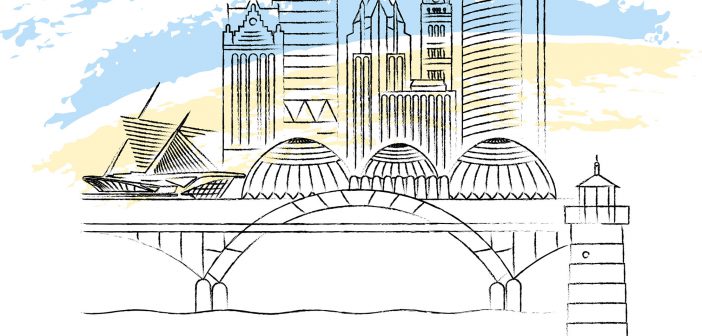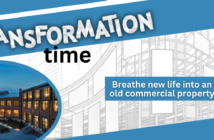by Asif Lakhani
Milwaukee is currently in the midst of a “building boom” with a $5 billion investment into construction projects such as skyscrapers, hotels, a sports and entertainment complex, a streetcar system, infrastructure improvements, and cultural facelifts for museums and theaters.
HOSPITALITY IS A HIT
Hilton, Hyatt, and Westin have all opened multimillion-dollar hotels in Milwaukee within the past few years and a local boutique hotel will soon become a Marriott Autograph as well. The city’s InterContinental also was converted to an art-forward hotel in 2019.
In all, the total Greater Milwaukee area has 17,433 hotel rooms, according to the latest report from Visit Milwaukee. Of those, just over 5,000 are in downtown. The average occupancy rate downtown is 65.9 percent with an ADR of $141.37. Revpar in downtown is $93.23, according to data from Smith Travel Research. The occupancy, ADR, and revpar numbers for Milwaukee County are slightly lower across the board, but not by much.
Development isn’t the only thing booming in Milwaukee. Business sales attributed to tourism by way of individual travelers to Milwaukee County amounted to $3.7 billion in 2018 and $5.7 billion to the four-county area that same year. Throughout the metropolitan Milwaukee area, tourism supported more than 85,000 full-time jobs.
Convention sales accounted for 192,186 room nights with an economic impact of $225.4 million, according to the state report. There are also 442 meetings and conventions booked in Milwaukee between now and 2024.
MILWAUKEE MOVES
As is the case with other cities covered in this column, Milwaukee has also gotten behind the streetcar movement. Known as The Hop, Milwaukee’s streetcar is sponsored by the Potawatomi Hotel & Casino, which enabled passengers to ride for free in 2019, the first year of operation. The fare price thereafter is just one dollar, but the projected economic impact of the project is far greater. The Milwaukee Streetcar Development and Investment guide states that The Hop could lead to a 63 percent (9,000 new units) housing increase, 23 percent (20,500) increase in new jobs, and $3.35 billion in new development within a quarter-mile of the original route by 2030.

F11PHOTO/SHUTTERSTOCK.COM
THEN & NOW
Despite all the talk about what’s new and emerging in Milwaukee, the city makes a great effort to highlight the abundance of history within it. As a matter of fact, Milwaukee is home to more than 160 cultural resources or properties listed on the National Register of Historic Places. One of the most iconic components of Milwaukee’s identity is it being the birthplace of Pabst Blue Ribbon beer. The city recently repurposed two former Pabst buildings into The Brewhouse Inn & Suites, a boutique hotel that “delivers an unforgettable Milwaukee experience,” its website states. A highlight of The Brewhouse is its preservation of the original copper brewing kettles in the hotel lobby. In 2017, Pabst returned to the site of its original complex and updated an 1870s Victorian-style church to become a microbrewery, restaurant, and bar known as Pabst MKE Brewery. The city’s history doesn’t revolve strictly around beer, however. A few years ago, Milwaukee moved forward with a proposal to create 90 apartments – priced for mixed-income levels – inside the Germania building, an 8-story steel building that was constructed in 1856 and was the largest office building in the city when it was completed, according to Wisconsin Architect. The Germania building was added to the National Register of Historic Places in 1983; the apartment conversion cost $22 million.
Clearly Milwaukee is committed to be a premier destination for business, tourism, and recreation for the foreseeable future. The city not only has all the necessary components required to be considered a major metropolis, but it also has the benefit of bordering Lake Michigan in downtown. In addition to its development and historic initiatives, the city is also a global leader in eco-friendly design and preservation solutions. Therefore, when looking for a place to conduct business retreats or escaping for a domestic getaway that combines the best of all worlds, Milwaukee may be as good as it gets, which is great news for hoteliers and business prospects in the city.
Milwaukee numbers:
- 17,433 hotel rooms in the Greater Milwaukee area
- 5,000 rooms downtown alone
- 65.9% average occupancy rate downtown




